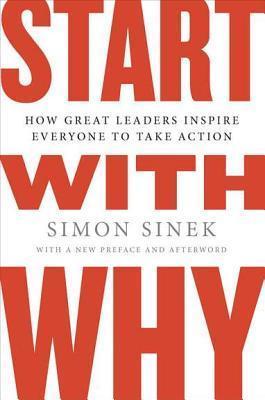b reviewed Start with why by Simon Sinek
Just-so stories for your enjoyment.
3 stars
The cover explains the thesis very well: start with a vision of what you want your company to look like (this book is entirely about corporations, with no mention of nonprofits or any other type of org), and never let go of or forget that vision.
If this were an academic book, the core problem would be how to observe or measure the extent to which the leaders of a corp maintain a vision. We can't hold a pop press book to high rigor, but because that's an unsolved problem, Sinek instead simply asserts that the winners of the world have maintained their vision and the others haven't. Apple is a core example in this book. If you're not from the USA, parts of Europe, or Japan, you won't necessarily recognize Apple as a major player, but in those regions it has a definite success history, especially at the level of retail (as opposed to bulk sales of thousands of PCs to buisness drones). Sinek says this is because they maintained their vision, while competitors in the personal computing world corps like Dell or Microsoft, failed to do so.
Later, there's a chapter on succession in corporate leadership, and whether the next leader can maintain the vision. He notes that Dell had a strong vision until a brief period when a successor lost it, then the original CEO, Michael Dell, came back. Microsoft also maintained a strong vision in this chapter during the period when, in the Apple chapter, Apple's competitors were clueless.
It's the job of the CEO to maintain that WHY, then the people around the CEO to work out the HOW (like the core advantages for your corp over the next), then those closer to whatever the product is to work out the WHAT (as in the product details). Think Steve Jobs and Steve Wozniak. So yes, focus on the WHY, unless you're not the CEO, in which case, no, you should be focusing on other things. I do appreciate his acknowledgement that somehow the vision has to become an actual thing.
To give one last just-so example:
In the late 1800s, the railroads were the biggest companies in the country. Having achieved such monumental success, even changing the landscape of America, remembering WHY stopped being important to them. Instead they became obsessed with WHAT they did— they were in the railroad business. This narrowing of perspective influenced their decision-making—they invested all their money in tracks and crossties and engines. But at the beginning of the twentieth century, a new technology was introduced: the airplane. And all those big railroad companies eventually went out of business.
This sounds very truthy. On the retail level, Amtrak passenger service carries a tiny fraction of moving bodies relative to airlines. But...outside of consumer-facing retail, how do you think every object you touch today got to you?
American Airlines market capitalization: $9.75 billion Southwest market cap: $21.8B United Airlines: $16.7 B CSX rail: $67.6 B Union Pacific rail: $130.2 B
Once you get past the brief intuition you have reading this from your business class airplane seat, you realize that it's a story based on a perspective stated as a fact. I'm giving you this rail line story because it's easy to verify (as are other claims; I'm not just trying to 'gotcha' on one vigorously unchecked point), but when we get back to the unverifiable question of what a leader's vision is, it compounds the problem.

